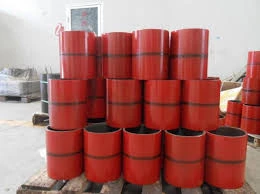- Afrikaans
- Albanian
- Amharic
- Arabic
- Armenian
- Azerbaijani
- Basque
- Belarusian
- Bengali
- Bosnian
- Bulgarian
- Catalan
- Cebuano
- Corsican
- Croatian
- Czech
- Danish
- Dutch
- English
- Esperanto
- Estonian
- Finnish
- French
- Frisian
- Galician
- Georgian
- German
- Greek
- Gujarati
- Haitian Creole
- hausa
- hawaiian
- Hebrew
- Hindi
- Miao
- Hungarian
- Icelandic
- igbo
- Indonesian
- irish
- Italian
- Japanese
- Javanese
- Kannada
- kazakh
- Khmer
- Rwandese
- Korean
- Kurdish
- Kyrgyz
- Lao
- Latin
- Latvian
- Lithuanian
- Luxembourgish
- Macedonian
- Malgashi
- Malay
- Malayalam
- Maltese
- Maori
- Marathi
- Mongolian
- Myanmar
- Nepali
- Norwegian
- Norwegian
- Occitan
- Pashto
- Persian
- Polish
- Portuguese
- Punjabi
- Romanian
- Russian
- Samoan
- Scottish Gaelic
- Serbian
- Sesotho
- Shona
- Sindhi
- Sinhala
- Slovak
- Slovenian
- Somali
- Spanish
- Sundanese
- Swahili
- Swedish
- Tagalog
- Tajik
- Tamil
- Tatar
- Telugu
- Thai
- Turkish
- Turkmen
- Ukrainian
- Urdu
- Uighur
- Uzbek
- Vietnamese
- Welsh
- Bantu
- Yiddish
- Yoruba
- Zulu
Exploring the Applications and Benefits of Perforated Pup Joints in Oil and Gas Industry
Understanding Perforated Pup Joints in Oil and Gas Applications
In the oil and gas industry, the efficiency and effectiveness of drilling operations are paramount. One crucial component that contributes to the overall success of drilling activities is the perforated pup joint. This specialized piece of equipment plays a vital role in enhancing the functionality of drilling operations, particularly in the context of wellbore stability, fluid management, and hydrocarbon flow.
What Are Perforated Pup Joints?
Perforated pup joints are short sections of pipe that have been drilled or machined with a series of holes or perforations. These joints are often used in conjunction with other tubular equipment, such as casing and tubing, to facilitate the flow of fluids, whether they be oil, gas, or drilling mud. The perforations allow for the controlled entry and exit of these fluids, thereby optimizing production rates and improving the overall efficiency of the system.
Key Functions of Perforated Pup Joints
1. Fluid Management One of the primary functions of perforated pup joints is to manage the flow of fluids within the wellbore. The perforations enable hydrocarbons to flow into the piping system while simultaneously allowing for the release of pressure or the introduction of drilling fluids. This dual functionality helps maintain wellbore stability and minimizes the risk of wellbore collapse.
2. Enhanced Production Rates The design and placement of perforated pup joints can significantly impact the production rates of hydrocarbon wells. By strategically positioning these joints in areas with high fluid mobility, operators can increase the efficiency of extraction processes, leading to higher yields with less effort. This is particularly important in formations where fluid flow is constrained.
perforated pup joints

3. Facilitation of Well Fracturing In certain drilling operations, especially in unconventional reservoirs, hydraulic fracturing is utilized to enhance resource extraction. Perforated pup joints can play a critical role in this process by allowing fracturing fluids to be injected into the formation through the perforations. By creating fractures in the rock, these joints help improve pathways for hydrocarbons to flow towards the wellbore.
4. Customization and Versatility Perforated pup joints are available in various sizes and configurations, allowing operators to customize their drilling equipment to fit specific operational needs. This versatility means that whether a well requires larger holes for high flow rates or smaller ones for reduced pressure loss, there are perforated pup joints available to meet the requirements.
The Importance of Material Selection
The materials used to manufacture perforated pup joints are critical to their performance and longevity. They must withstand the harsh conditions typically encountered in drilling operations, including high pressures, temperatures, and corrosive environments. Commonly, high-strength steel alloys are used for these joints, as they provide the necessary strength while minimizing potential failures. Additionally, various coatings and treatments can be applied to enhance corrosion resistance and prolong the lifespan of these critical components.
Conclusion
In conclusion, perforated pup joints are essential components in the oil and gas industry, playing a crucial role in fluid management, enhancing production rates, and facilitating well fracturing operations. Their design offers versatility and customization, allowing operators to tailor their drilling approaches to meet specific challenges. As the industry continues to evolve and face new challenges, the importance of understanding and utilizing perforated pup joints will remain a key factor in achieving operational efficiency and success in hydrocarbon extraction. By optimizing the placement and functionality of these joints, operators can ensure that they maximize their productivity while minimizing costs, contributing to the sustainable development of energy resources.
-
Tubing Pup Joints: Essential Components for Oil and Gas OperationsNewsJul.10,2025
-
Pup Joints: Essential Components for Reliable Drilling OperationsNewsJul.10,2025
-
Pipe Couplings: Connecting Your World EfficientlyNewsJul.10,2025
-
Mastering Oilfield Operations with Quality Tubing and CasingNewsJul.10,2025
-
High-Quality Casing Couplings for Every NeedNewsJul.10,2025
-
Boost Your Drilling Efficiency with Premium Crossover Tools & Seating NipplesNewsJul.10,2025







